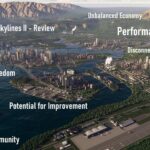
Key Takeaways
- Historical Trends: Past U.S. immigration policies influence current debates and voter perceptions in the 2024 election.
- Electoral Map: Immigration issues are reshaping political landscapes and influencing key swing states.
- Economic Inequality: Debates on immigration policies are central to discussions on economic inequality in the 2024 election.
- Voter Turnout: Attitudes toward immigration significantly affect voter turnout, especially in swing states.
- Healthcare Intersection: Immigration and healthcare policies intersect, impacting voter opinions and policy debates.
Understanding these dynamics will give you insight into how immigration shapes the political landscape in 2024.
Historical Trends in U.S. Immigration Policy and Their Impact on the 2024 Election
U.S. immigration policy has evolved significantly over the years, from early restrictive measures to more inclusive approaches. These historical shifts have laid the groundwork for the current debates surrounding immigration.
Key Historical Shifts:
- Early Restrictions: The Chinese Exclusion Act of 1882 marked the beginning of restrictive immigration policies.
- Immigration and Nationality Act of 1965: This act removed racial quotas and opened doors to new immigrants from various countries.
- Recent Developments: In recent decades, policies such as DACA (Deferred Action for Childhood Arrivals) and debates over border security have shaped current perceptions.
These historical trends influence how voters view immigration policies today. For example, the debates over border security and DACA have become central issues in the 2024 election.
Example: According to the Migration Policy Institute, historical immigration policies still impact current voter attitudes, especially in areas with significant immigrant populations.
The Role of Immigration in Shaping the 2024 Electoral Map
Immigration is a key factor in the 2024 electoral map, influencing both the red and blue states. Shifts in demographic patterns due to immigration have altered political landscapes.
Key Influences:
- Swing States: States like Florida, Texas, and Arizona are seeing increased immigrant populations, which impact local elections and overall political strategies.
- Urban vs. Rural Divide: Urban areas with high immigrant populations tend to lean more Democratic, while rural areas with fewer immigrants may lean more Republican.
Case Study: In Texas, the growing Hispanic population is a significant factor in the political strategy of both parties. The Pew Research Center notes that immigration issues are a driving force in local and national elections, particularly in swing states.
How Immigration Policies Influence Economic Inequality Debates in the 2024 Election
Immigration policies are closely tied to discussions about economic inequality. How immigrants are integrated into the workforce and the benefits they receive can influence voter opinions on economic fairness.
Economic Impact:
- Labor Market: Immigrants often fill essential roles in various industries, but debates over job competition and wage impacts continue.
- Social Services: Policies regarding access to social services and benefits for immigrants can affect perceptions of economic inequality.
Example: Research by the Economic Policy Institute shows that immigrants contribute significantly to the economy, but there are ongoing debates about their impact on wages and job availability for native workers.
The Influence of Immigration Attitudes on Voter Turnout in Swing States for 2024
Attitudes toward immigration can drive voter turnout, particularly in swing states where elections are often decided by a small margin.
Key Points:
- Mobilization: Positive or negative views on immigration can mobilize voters. For instance, strong opinions about immigration policy might encourage more people to vote based on their stance.
- Swing States: In states like Arizona and Georgia, where immigration is a hot-button issue, voter turnout can be significantly influenced by attitudes toward immigration.
Case Study: According to FiveThirtyEight, immigration debates in swing states are known to drive voter engagement and turnout, with candidates focusing heavily on these issues to sway undecided voters.
The Intersection of Immigration and Healthcare Policy in the 2024 Election
Immigration and healthcare policies are intertwined, with debates about healthcare access for immigrants shaping the 2024 election.
Key Issues:
- Access to Healthcare: Policies regarding healthcare access for undocumented immigrants and legal residents are a point of contention.
- Healthcare Reform: Discussions about healthcare reform often include considerations of how to address the needs of immigrant populations.
Example: The Center for American Progress highlights that debates over healthcare for immigrants are significant in shaping broader healthcare policy discussions and influencing voter opinions.
Conclusion
Immigration remains a central issue in the 2024 election, influencing everything from electoral strategies to debates on economic inequality and healthcare. Historical trends, changing demographics, and intersecting policies all play a role in shaping public opinion and voter behavior.
By understanding how these factors interplay, you can better grasp how immigration issues impact the current political landscape and what to expect in the upcoming election.
For more insights on how immigration affects politics and policies, keep exploring and staying informed about the latest developments in U.S. immigration policy.















